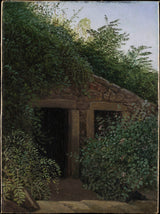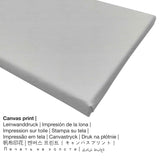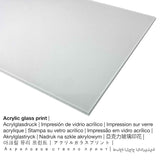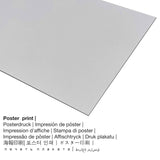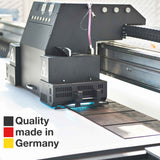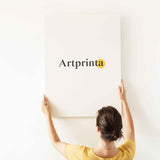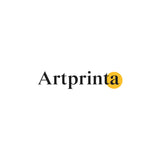Carl Gustav Carus, 1824 - Mineshaft tolitere - ọmarịcha nka
Ụtụ gụnyere. Mbupu gbakọrọ na ndenye ọpụpụ.
Ihe ebipụta nka na-enye:
In the product dropdown selection you can select a material and a size of your choice. The following options are available for individualization:
- Kwaaji: The UV printed canvas material stretched on a wood stretcher frame. Also, a printed canvas creates a soft and positive feeling. Hanging your canvas print: Canvas prints are relatively low in weight. That means, it is easy to hang the Canvas print without extra wall-mounts. A canvas print is suitable for all kinds of walls.
- Ebipụta akwụkwọ mmado na ihe akwa akwa: Our poster print is a UV printed canvas paper with a nice structure on the surface. A poster is particularly designed for framing your fine art print with the help of a special frame. Please note, that depending on the absolute size of the poster we add a white margin of something between 2-6cm round about the print motif to facilitate the framing with a custom frame.
- Aluminom dibond (ọkpụkpụ ọla): This is a metal print made on aluminium dibond with a true depth. For your Direct Print On Aluminum Dibond, we print the selected artpiece right onto the aluminium white-primed surface. The bright & white parts of the artwork shine with a silk gloss but without glare. The direct UV print on Aluminum Dibond is one of the most popular entry-level products and is a sophisticated way to display artworks, since it puts the viewer’s attention on the image.
- Mbipụta iko acrylic (nke nwere ezigbo mkpuchi iko): An print on acrylic glass, often described as a UV print on plexiglass, will convert your favorite original into wall decoration and is a viable alternative option to aluminium or canvas prints. The work of art is custom-made with state-of-the-art UV print machines. It creates deep, rich color hues. With an acrylic glass art print contrasts and granular color details become more exposed because of the granular gradation.
Ihe dị mkpa: We try what we can to depict our products as closely as possible and to exhibit them visually. Nonetheless, the colors of the printing material and the printing may vary somehwat from the image on your device's monitor. Depending on your screen settings and the quality of the surface, color pigments might not be printed as realistically as the digital version depicted here. Given that the art prints are printed and processed by hand, there may as well be slight deviations in the motif's size and exact position.
Ozi izugbe sitere na The Metropolitan Museum of Art (© Nwebiisinka - The Metropolitan Museum of Art - www.metmuseum.org)
Carus was a leading painter of German Romanticism, second in importance only to his close friend Caspar David Friedrich. He was a multitalented man: a correspondent of Goethe's, theorist, writer on art, medical professor, royal physician, and notable scientist. His now-famous Nine Letters on Landscape Painting (1831) reflects his changing attitude toward nature. Having initially embraced a religio-mystical Romanticism, one that was nurtured by his friendship with Friedrich, Carus then changed course, moving toward greater objectivity and a nascent naturalism. His increased spontaneity in the face of nature is vividly expressed in the modest motif of An Overgrown Mineshaft, an entrance to a rock cave that has been taken over by riotous weeds and bushes.
In 1824 na German onye na-ese ihe Carl Gustav Carus kere ihe osise a na-akpọ "An Overgrown Mineshaft". The 190 years old original of the artwork measures the size: 11 1/4 x 8 1/4 in (28,6 x 21 cm) and was painted with the medium oil on paper, laid down on cardboard. Ọzọkwa, artpiece bụ nke dijitalụ collection nke Museumlọ ihe ngosi nka nke Obodo, nke bụ otu n'ime ụlọ ngosi ihe ngosi nka kachasị ukwuu na nke kachasị mma n'ụwa, nke gụnyere ihe karịrị nde abụọ ọrụ nka nke gbara puku afọ ise nke omenala ụwa, site na prehistory ruo ugbu a na site n'akụkụ ọ bụla nke ụwa. ngalaba ọha masterpiece na-nyere na n'ikike nke The Metropolitan Museum of Art, New York, Onyinye Eugene V. Thaw, 2007. Ihe kredit nke artpiece bụ nke a: Onyinye nke Eugene V. Thaw, 2007. Ọzọkwa, alignment bụ na Eserese format ma nwee oke nke 3: 4, nke pụtara na ogologo ya dị 25% dị mkpụmkpụ karịa obosara.
Data nka ahaziri
| Aha nka: | "An Overgrown Mineshaft" |
| Nhazi: | sere |
| Okwu mkpokọta: | nkà nke oge a |
| Narị afọ nka: | 19th narị afọ |
| Emepụtara na: | 1824 |
| Ogologo afọ nka nka: | ihe dị ka afọ 190 |
| Usoro nka izizi: | oil on paper, laid down on cardboard |
| Nha izizi: | 11 1/4 x 8 1/4 na (28,6 x 21 cm) |
| Ụlọ ihe ngosi nka / ebe: | Museumlọ ihe ngosi nka nke Obodo |
| Ebe ngosi nka: | New York City, New York, Njikota Obodo Amerika |
| Ebe nrụọrụ weebụ ihe ngosi nka: | Museumlọ ihe ngosi nka nke Obodo |
| Licensedị ikike: | ngalaba ọha |
| Site n'aka: | The Metropolitan Museum of Art, New York, Onyinye Eugene V. Thaw, 2007 |
| Ebe E Si Nweta: | Onyinye nke Eugene V. Thaw, 2007 |
Banyere ngwaahịa a
| Nkewa edemede: | ọrụ mgbidi |
| Usoro mmeputakwa: | dijitalụ mmeputakwa |
| Production usoro: | Mbipụta UV / dijitalụ |
| Production: | German mere |
| Stockdị ngwaahịa: | na mmepụta ihe |
| A na-atụ aro iji ngwaahịa eme ihe: | nka mgbidi, mma mgbidi |
| Ndepụta: | usoro eserese |
| Oke akụkụ: | 3: 4 - ( Ogologo: obosara) |
| Nkọwa nke oke akụkụ: | ogologo bụ 25% mkpụmkpụ karịa obosara |
| Nhọrọ ihe dị: | ígwè obibi akwụkwọ (aluminium dibond), ebipụta canvas, mbipụta enyo acrylic (nwere ezigbo mkpuchi iko), mbipụta akwụkwọ mmado (akwụkwọ kwaaji) |
| Nhọrọ nke akwa akwa n'elu etiti ihe ndọtị (mbipụta akwa akwa): | 30x40cm - 12x16", 60x80cm - 24x31", 90x120cm - 35x47", 120x160cm - 47x63" |
| Mpempe iko acrylic (nwere ezigbo mkpuchi iko) nha dị iche iche: | 30x40cm - 12x16", 60x80cm - 24x31", 90x120cm - 35x47", 120x160cm - 47x63" |
| Nhọrọ nha nke akwụkwọ mmado (akwụkwọ kwaaji): | 30x40cm - 12x16", 60x80cm - 24x31", 90x120cm - 35x47" |
| Mbipụta nke aluminom (ihe aluminom): | 30x40cm - 12x16", 60x80cm - 24x31", 90x120cm - 35x47" |
| Igwe onyonyo: | mmeputakwa na-enweghị isi |
Tebụl ozi omenkà
| Aha onye nka: | Carl Gustav Carus |
| Aha ndị ọzọ: | Carus Carl Gustav, Carl Gust. Carus, karl gustav carus, Carl G. Carus, Carus Karl Gustav, Carus Dr. Karl Gustav, Carus C. G., Carus K. G., Carl Gustav Carus, k. g. carus, carus dr. karl gustav |
| okike onye nka: | nwoke |
| Obodo onye nka: | German |
| Ọrụ nke onye na-ese ihe: | painter, philosopher, psychologist, botanist, anatomist, university teacher, gynaecologist |
| Obodo obibi: | Germany |
| Nhazi nke onye nka: | omenkà nke oge a |
| Akwụsị: | 80 afọ |
| A mụrụ: | 1789 |
| Ebe omuma: | Leipzig, Saxony, Germany |
| Nwụrụ n'afọ: | 1869 |
| Nwụrụ na (ebe): | Dresden, Saxony, Germany |
Edobere ederede a site na nwebisiinka © - Artprinta.com (Artprinta)

